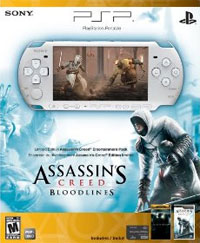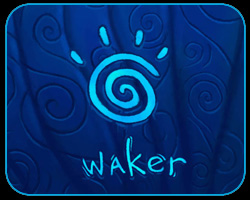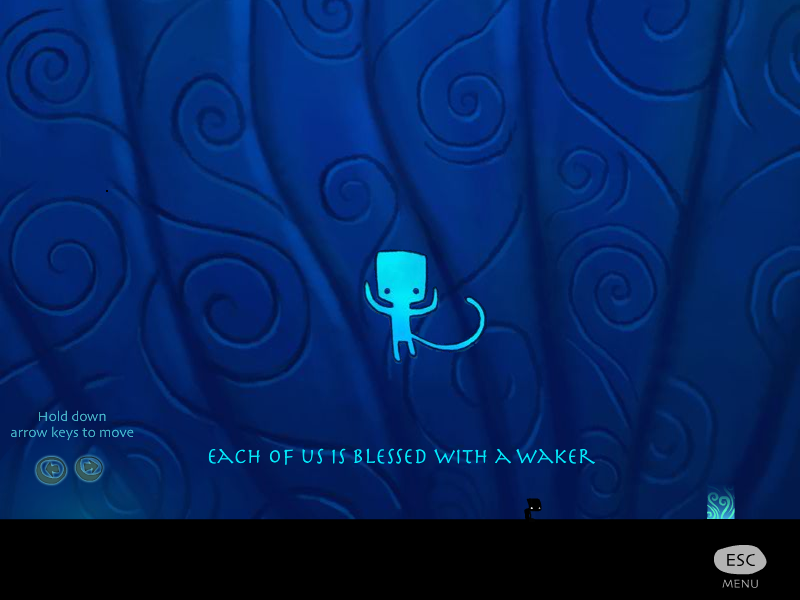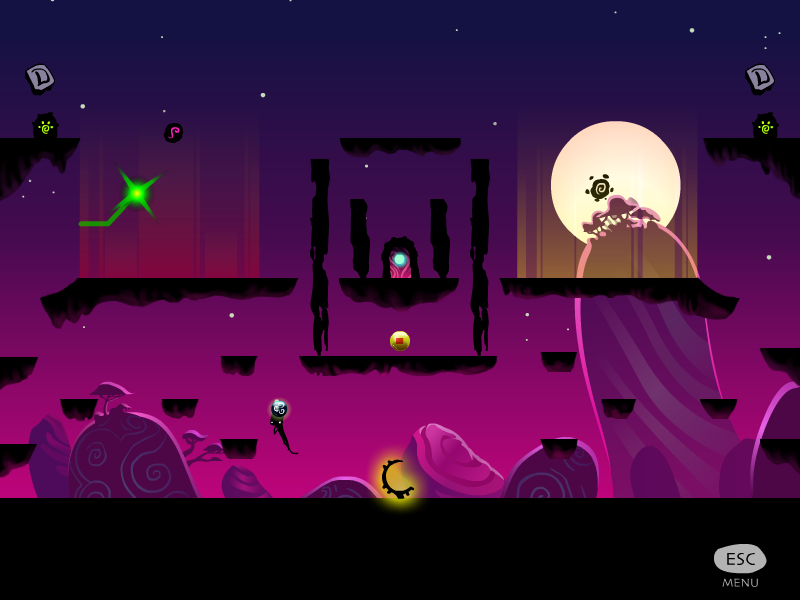
Recently in Gaming Category

What were the factors? I'm so glad you asked.
Research. I've been considering the PSP as a great platform for transmedia extensions for a while now, but the release of Assassin's Creed II: Bloodlines as a PSP-only narrative bridge between the Assassin's Creed and Assassin's Creed II console games clinched the deal. Throw in the PSP-exclusive Final Fantasy VII: Crisis Core and the upcoming Kingdom Hearts: Birth by Sleep and this reason hit #1 with a bullet.
Timing. Call it a near-miss of synchronicity: not only do I turn 32 on Sunday, but yesterday was the PlayStation's 15th birthday. This is making me feel both old and nostalgic; the fact that I can buy Final Fantasy VII at all for the PSP is awesome, but I vividly remember being a freshman in college and having my socks knocked off by my friend Kurt's shiny new copy of Final Fantasy VII. What can I say? I wanted to give myself a birthday present, and so I gave Sony a birthday present of my money.
Curiosity. Discovering the existence of a cradle for the PSP made me imagine using the PSP as an always-on Internet appliance. I've been looking at things like the tiny little Mimo USB-driven minidisplays and the new Chumby One as small Internet-enabled devices, functioning as simple kiosks for things like Flickr and Twitter.
So now I have my very own PSP-3000, courtesy of the PSP 3000 Limited Edition Assassin's Creed: Bloodlines Entertainment Pack. It's a strange color, described by Sony as 'pearl white'. This is something of a misnomer; I was expecting something kind of irridescent, like, well, a pearl. It isn't. Instead, the thing glitters. It's not that bad, especially when it's in a relatively low-light situation, but when the sun hits it just right, the sucker glitters like goddamned Edward. (Yes, I went there.) Again, it's not that bad, but I'm admittedly considering buying some kind of leather sheath for the device to man it up a little.
I haven't gotten to play the game very much yet, but so far my expectations for this device as a pocket computer have been coming down on the wobbly side. It's not entirely Sony's fault; I've been a heavy iPhone user since its initial release, so many of my expectations for what a portable device can and should be have been notably skewed – but when I started playing with the PSP, I realized that I had completely taken for granted that I'd be able to obtain some kind of dedicated Twitter app for this thing. Not only is that only apparently not the case (at least without hacking the device and installing some alternate form of OS, perhaps) but the experience of typing on this beast has been so utterly execrable that the very thought of attempting to write on this thing for even 140 characters at a time makes my ass twitch. Even attempting to pull up the Twitter site on a PSP is a groanworthy undertaking – not only is the browser astonishingly slow, but the wi-fi connection must be reestablished every time you launch it. This makes sense at some level – switching the wi-fi on and off as needed is a logical way to extend battery life – but asking me which of my established networks it wants me to to connect to every time is ridiculous, especially when the two choices are the network here on campus and the network at home. One simple bit of automated checking would have removed this annoyance: if one network is available and the other isn't, don't ask.
Another aspect of this thing which is distinctly odd is the sensation of having a spinning piece of physical media in the back of the device, and almost no on-deck storage. Again, this is almost certainly the result of being an early adopter of the iPhone and a very, very late adopter of the PSP, but I was somewhat amazed that I couldn't install my copy of Bloodlines to some kind of internal drive and then retire the Universal Media Disc (UMD). True, I can't do that with my Nintendo DS, either, but for some reason I thought of the PSP as a more forward-thinking device. Ha.
In fact, for a brief little while after first popping the UMD into the device I seriously considered taking the thing back and getting a PSP Go instead – and this is despite the litany, or even cacophony, of utterly disastrous reviews that have been lambasting the Go. As Ars Technica's Ben Kuchera so devastatingly advised Sony, "when your older, cheaper hardware is better and more able than your new offering, you need to fire some designers". Ouch.
So why was I even considering swapping the PSP-3000 for a PSP Go? First, I'm a design junkie, and the Go's slider-style industrial design is very sexy. Second, I'm also a digital downloads enthusiast – I can't remember the last time I bought a CD, and my physical Netflix discs have been sitting on the shelf gathering dust ever since Netflix Streaming arrived – and the PSP's digital-download only model is, in the abstract, incredibly attractive to me. Plus, the PSP Go is smaller, and as I noted in an earlier post, recent health issues have made me start to seriously reconsider how much junk I'm willing to carry around on a daily basis. If I'm going to add another device to my satchel, it'd better weigh as little as possible.
Still, the naysayers on the Go have me convinced. The fact that Sony's digital download versions are more expensive than the physical versions is a deal-killer, amplified by the fact that I can't buy heavily-discounted used UMDs and rip them into playable digital versions the way I might buy some used CDs and rip them into perfectly servicable MP3s. Sony also backed off on a planned trade-in program swapping physical media for digital versions, so UMDs and the PSP Go will apparently never get along – and since Crisis Core isn't available on for digital downloading yet, then 25% of the games driving me to buy a PSP at all just went away. (That number jumps up to a full one third given that Birth by Sleep isn't out yet.) I'm clearly a Square-Enix fan, as 75% of my PSP game wishlist are Squeenix games, but God knows I'm not the only one. Sony's managed to get Squeenix to put FFVII on their digital download service and (I think) the Final Fantasy-themed brawler Dissidia (itself a chimera of somewhat dubious genetics), but until Squeenix commits that all its future games will be available for downloading, then owning a PSP Go makes no sense for me.
As it is, this strange little device represents a fascinating new toy to tinker with over the holidays. I'm looking forward to taking it on our honeymoon so I can whack some Templars while en route to Florida, and I'm holding out hope that when I really start tinkering with it I can hack it to do some of the other things I thought it might be able to do out of the box – but I can't shake the feeling that in this post-iPhone environment, Sony is really missing out by not making those very functions stock. I'd pay a couple extra bucks per function if Sony enabled app downloads on their PlayStation Network, letting me set up my PSP as a kind of Chumby lite. I'd also jump at the chance to buy the PS2's Kingdom Hearts and Kingdom Hearts II on it the same way that I can get Final Fantasy VII, but apparently they're not available yet – or if they will ever be made available at all.
This drives home one of the negative affordances inherent in games as opposed to books, music or (now) even movies: books, music and movies all convert fairly well to portable versions which can be stored on one's laptop or phone, but console video games are almost completely locked down into one's living room. The PSP offers a function called 'remote play' which was, I believe, designed to address that somewhat, and the screen-to-screen interaction between Assassin's Creed II on the PS3 and Assassin's Creed: Bloodlines on the PSP is what drove me to switch to the PlayStation versions of the franchise from the Xbox 360 version I have of Assassin's Creed – but there is still such a very long, long way to go before I can be playing Uncharted 2 on my living room couch, pause the game, run out and jump on a bus to work, then pop open my PSP and continue the game from where I left off. Even taking greatly reduced graphics and other concessions to the form as givens, I feel like this is where we're heading. The fact that we're not there yet is slightly annoying – especially as games are attempting to become bigger and bigger components of the media diet of increasingly over-busy adults.
At the end of the day, I'm still fairly happy I bought my PSP, and I'm still looking forward to playing with it. That said, I'm looking forward even more to playing with what comes next, in the hopes that it will do what I hoped this device would do – and, with a little luck, the PSP2 or whatever it's called will arrive before it has an entirely new set of unrealistic expectations set for it by the rest of the market.
Waker is a puzzle/platform game set in the world of a child's broken dream. As the Waker, the player uses both mind and reflexes to solve puzzles, creating platforms to form a safe path through the dream worlds. Forming the paths, however, is the trick - it is up to the player to figure out how to create each path, and to manipulate the Waker and the world to travel safely through each level. With dynamic obstacles and three difficulty modes, the game offers continuing challenges even for experienced players, while allowing beginners an easier path to the end.I am thoroughly honored to have been involved with this project for multiple reasons. First, Waker gave me a chance to work with my friends Sara Verrilli, Kevin Driscoll, Scot Osterweil and Lan Le, as well as befriend a bunch of other folks from Singapore, MIT and RISD. Second, the game is absolutely beautiful, thanks to the hard work of Brandon Cebenka, Rini Ong Zhi Qian and Steven Setiawan. I loved the aesthetic of Waker, from the graceful, fluid animation of the cat-monkey creature to the textures to the gentle glow scattered throughout the game. I loved the dreamlike sensibility of the world, and the basics of the storyline that Brendan and the others had sketched out before I was brought onboard was completely up my alley.Waker was developed in tandem with Woosh, its abstract variant. Waker offers the same gameplay as Woosh, but also includes a rich narrative and a story that is reflected in its art and cutscenes.
I was invited to join the project when it was decided – at the last minute! – that the story needed to be fleshed out some more, so I rewrote the story in an evening, met with Brendan and the others the next morning, did some super-fast re-rewrites and then jumped into the recording booth to do all the voiceover work myself as well. Mercifully I managed to nail the John Hurt-esque narrator's voice that had popped into my head while writing the thing, so I was thoroughly happy with how well that turned out.
I'm also thoroughly grateful for the opportunity to write a GAMBIT game (complete with the apparently all-too-true-to-the-industry "Can we have this tomorrow?" experience) and for the not-very-true-at-all-to-the-industry experience of being able to perform the role I'd written. If you're half as much of a fan of Neil Gaiman's Sandman or Mike Mignola's Hellboy as I am, I recommend that you go and give Waker a shot. (Hey, it's free and it runs in a browser window – what's stopping you? Go! Play it now!)
Please let me know what you think of the game! You can also see what people are saying about the game already at Free Games News and XSp, and follow new reviews for Waker and the rest of the GAMBIT games as they appear at the In the Press section of the GAMBIT site.
Heh. I still get a grin on my face just thinking about that whole experience. I've got a new GAMBIT project in the works for this fall, so I'll keep you posted!
Update (9/1/09): Flytrap Games just published a really funny writeup of the game titled Agile Spirit Cat Required for Mental Roadworks. These guys really got what I was going for:
Dreaming is more hazardous than most people suspect. Every time you sleep, a path forms behind your dreaming self to guide you back to the waking world.On occasion, however, that path breaks, leaving the dreamer to stand forever stark naked in front of the sixth form girls while Billy Connolly plays the banjo. Or whatever private delusions are appropriate to your particular mental setup.
Fortunately, a ruptured dream path can be repaired by a Waker - a sort of Druidic cat entity which puts us in mind of the mog from Coraline. As one such Waker, players of Singapore-MIT GAMBIT Game Lab's latest puzzle-platformer must collect "wisps" to restore a lost soul to consciousness.
I am, as they say, well and thoroughly chuffed. (I wish we'd thought of that Billy Connolly nightmare. That would make a thoroughly horrific bonus level.)
Update (9/2/09): Waker is getting even more press! Lewis Denby of Resolution magazine in England makes the following observations:
This odd little pairing is more than a bit interesting to talk about. Woosh and Waker are puzzle/platform games developed by Poof Games for Gambit, which is a collaboration between MIT and the Singapore government. Woosh and Waker are part of an experimental, educational project, to see how players respond to different presentations within videogames.Launching each game doesn't immediately throw up too many similarities. But dive into the game proper and you'll realise they're both exactly the same in terms of the mechanics and level design. The difference? One presents an anthropomorphic character and introduces a story. The other sees you guiding a bouncy ball around the same platforms, only with a backdrop consisting purely of abstract art. There's no plot to be found.
It is, of course, very interesting to consider which side of the fence you fall on. Do you prefer the abstract visual beauty of Woosh, or the more evocative, story-driven presentation of Waker? Do you prefer guiding a living character, or a blissfully unaware rolling ball? But what's particularly brilliant for the player is that both are excellent, seriously clever games. Try them both out, and have a think about the difference in your approach to each one.
Meanwhile, Bart at bontegames.com gives the game a one-line notice, but a user calling itself Lichen Fairy says this in the comments: "The ending is beautiful. The game-play can be a bit frustrating at times but I love the story." Thanks!
The game has even been picked up in Italy, where a post from indievault.it describes the game as follows:
Benvenuti nel mondo dei sogni... Waker, sviluppato dai ragazzi di Poof Games, vi proietterà in un mondo onirico, nelle sembianze di un waker, una sorta di guardiano del dolce dormire simile a un gatto. Il vostro scopo sarà quello di ristabile il continuum del sogno di una bambina, permettendole così di risvegliarsi da un sonno ininterrotto. Dovrete intraprendere un viaggio lungo tre mondi, ciascuno dei quali è formato da molteplici sottolivelli che garantiscono un'esperienza non certo da mordi e fuggi.
Or, if Google translate is to be believed:
Welcome to the world of dreams ... Waker, developed by the young people Poof Games, we will project into a dream world, in the form of a waker, a kind of guardian of sweet sleep like a cat. Your goal will be to restore the continuum of the dream of a child, enabled it to awaken from a sleep uninterrupted. You will need to undertake a journey across three worlds, each of which consists of multiple sub-levels, offering an experience not by hit and run.
This is awesome – and they're still coming!
Update (9/2/09, again): Perhaps the biggest and best review of Waker just went live – check out Daniel Archer's glowing profile at JayIsGames!
Waker is a project born from GAMBIT, Singapore-MIT's game design lab, and the multidisciplinary input shows. The art and animation invoke the phantasmal in such a way that it's not hard to believe that this idea could have been hauled from the same place dreams come from. Little touches breathe life into the Waker and the world, like the blinking of one eye at a time should you let the creature sit still for a few moments. The music is softly whimsical, the same way a child's dream should be.While the writing sets up the game quite marvelously, what with the Wakers and the Dreamtime and associated fantasies, the story starts to fade as the game progresses, being delivered to the player in short injections between one world and the next. It's a tad disappointing to have the developers weave all this vibrant lore about what happens when the lights go out, only to have it squeezed into the cracks. It would have been nicer to see the story dovetail with the gameplay more smoothly, but there's still a lot more creativity at work here than your average puzzle game.
...While the game might be short for those who attack it head-on, it's certainly a trip worth taking, and the dazzling visuals coupled with the imaginative tale of the Wakers marks this game as one of the most innovative puzzlers to date. Now don't let me keep you, for there's already a child lost in the slumber, hoping for someone, anyone to show them the way home.
Well? The Waker is waiting.
You can't see it, but I'm throwing devil horns in the air. It's true that the story only appears in little bits between the worlds, but given the time constraints and the massive workload on Poof's shoulders (they made not just one game in eight short weeks, but two! Two, people! Two!) I can safely say that Poof kicked ass. Way to go, guys!

Hello, thanks for having me into your event today, and thanks for that intro. Though there is a problem with that: I am not Bruce Sterling. He couldn't make it. He sent me instead. The reason he couldn't make it is that in 2043, Bruce is 89. Dr. Sterling is too frail to get into a time machine to talk to game devs, so he called on me to do it. I am one of his grad students. I volunteered, sort of, to journey back in time using some of our new technical methods. It wasn't exactly easy, but I am here and fully briefed.Priceless. You should definitely swing by Koster's site and read the whole thing, even though it can't compete with the sheer ludicrousness of




